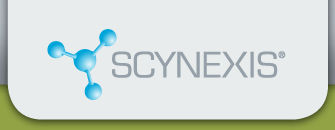预约演示
更新于:2025-05-07
HBV pre-S1 x NTCP
更新于:2025-05-07
基本信息
相关靶点 |
关联
2
项与 HBV pre-S1 x NTCP 相关的药物作用机制 HBV pre-S1抑制剂 [+1] |
在研机构- |
原研机构 |
在研适应症- |
非在研适应症 |
最高研发阶段无进展 |
首次获批国家/地区- |
首次获批日期1800-01-20 |
作用机制 HBV pre-S1抑制剂 [+1] |
在研机构- |
原研机构 |
在研适应症- |
非在研适应症 |
最高研发阶段无进展 |
首次获批国家/地区- |
首次获批日期1800-01-20 |
100 项与 HBV pre-S1 x NTCP 相关的临床结果
登录后查看更多信息
100 项与 HBV pre-S1 x NTCP 相关的转化医学
登录后查看更多信息
0 项与 HBV pre-S1 x NTCP 相关的专利(医药)
登录后查看更多信息
9
项与 HBV pre-S1 x NTCP 相关的文献(医药)2025-04-01·Microbiology and Immunology
Analysis of the Functional Role of TIMM29 in the Hepatitis B Virus Life Cycle
Article
作者: Kimura‐Ohba, Shihoko ; Muriungi, Nelly ; Ueda, Keiji ; Suwanmanee, Yadarat ; Abueldahab, Limia ; Wada, Masami ; Ohsaki, Eriko
2025-01-01·Journal of Hepatology
Neuropilin-1 is a novel host factor modulating the entry of hepatitis B virus
Article
作者: Cheng, Shengtao ; Xu, Kexin ; Deng, Haijun ; Zhang, Zhenzhen ; Dang, Yongjun ; Yu, Haibo ; Song, Kunling ; Qin, Yiping ; Huang, Ailong ; Guo, Zufeng ; He, Xin ; Wu, Daiqing ; Chen, Juan ; Yang, Zhen ; Li, Linfeng ; Yao, Xinyan ; Ren, Jihua
2024-06-01·The American Journal of Human Genetics
Joint host-pathogen genomic analysis identifies hepatitis B virus mutations associated with human NTCP and HLA class I variation
Article
作者: Fellay, Jacques ; Urban, Stephan ; Marcellin, Patrick ; Lawless, Dylan ; Scheck, Andreas ; Gaggar, Anuj ; Xu, Zhi Ming ; Buti, Maria ; Rüeger, Sina ; Schneuing, Arne ; Naret, Olivier ; Gnouamozi, Gnimah Eva ; Junier, Thomas ; Zeller, Matthias ; Subramanian, Mani ; Suri, Vithika ; Podlaha, Ondrej ; Correia, Bruno ; Shea, Patrick R ; Chan, Henry Ly ; Gfeller, David ; Moradpour, Darius
分析
对领域进行一次全面的分析。
登录
或

生物医药百科问答
全新生物医药AI Agent 覆盖科研全链路,让突破性发现快人一步
立即开始免费试用!
智慧芽新药情报库是智慧芽专为生命科学人士构建的基于AI的创新药情报平台,助您全方位提升您的研发与决策效率。
立即开始数据试用!
智慧芽新药库数据也通过智慧芽数据服务平台,以API或者数据包形式对外开放,助您更加充分利用智慧芽新药情报信息。
生物序列数据库
生物药研发创新
免费使用
化学结构数据库
小分子化药研发创新
免费使用
